#aws lambda developer
Text
AWS Lambda Compute Service Tutorial for Amazon Cloud Developers
Full Video Link - https://youtube.com/shorts/QmQOWR_aiNI
Hi, a new #video #tutorial on #aws #lambda #awslambda is published on #codeonedigest #youtube channel.
@java @awscloud @AWSCloudIndia @YouTube #youtube @codeonedigest #codeonedigest #aws #amaz
AWS Lambda is a serverless compute service that runs your code in response to events and automatically manages the underlying compute resources for you. These events may include changes in state such as a user placing an item in a shopping cart on an ecommerce website.
AWS Lambda automatically runs code in response to multiple events, such as HTTP requests via Amazon API Gateway, modifications…

View On WordPress
#amazon lambda java example#aws#aws cloud#aws lambda#aws lambda api gateway#aws lambda api gateway trigger#aws lambda basic#aws lambda code#aws lambda configuration#aws lambda developer#aws lambda event trigger#aws lambda eventbridge#aws lambda example#aws lambda function#aws lambda function example#aws lambda function s3 trigger#aws lambda java#aws lambda server#aws lambda service#aws lambda tutorial#aws training#aws tutorial#lambda service
0 notes
Text
Power of Natural Language Processing with AWS
Dive into the world of Natural Language Processing on AWS and learn how to build intelligent applications with services like Amazon Comprehend, Transcribe, and Polly. Explore the future of language-driven AI and cloud computing #AWSNLP #AI #CloudComputing
Natural Language Processing (NLP) has emerged as a transformative force in the realm of artificial intelligence, enabling computers to comprehend and generate human-like text. As businesses increasingly recognize the value of language-driven insights and applications, cloud platforms such as Amazon Web Services (AWS) have played a pivotal role in democratizing access to advanced NLP capabilities.…

View On WordPress
#AI Development#AI Services#Amazon API Gateway#Amazon Comprehend#Amazon Lex#Amazon Polly#Amazon Transcribe#Amazon Translate#amazon web services#aws#AWS Lambda#chatbot development#Cloud Computing#Cloud Services#Conversational Interfaces#Language Processing Applications#Language Understanding#Machine Translation#natural language processing#Neural Machine Translation#NLP#sentiment analysis#speech recognition#Text Analysis#text-to-speech#Voice Interfaces
4 notes
·
View notes
Text
youtube
Watch the American Climate Leadership Awards 2024 now: https://youtu.be/bWiW4Rp8vF0?feature=shared
The American Climate Leadership Awards 2024 broadcast recording is now available on ecoAmerica's YouTube channel for viewers to be inspired by active climate leaders. Watch to find out which finalist received the $50,000 grand prize! Hosted by Vanessa Hauc and featuring Bill McKibben and Katharine Hayhoe!
#ACLA24#ACLA24Leaders#youtube#youtube video#climate leaders#climate solutions#climate action#climate and environment#climate#climate change#climate and health#climate blog#climate justice#climate news#weather and climate#environmental news#environment#environmental awareness#environment and health#environmental#environmental issues#environmental justice#environment protection#environmental health#Youtube
17K notes
·
View notes
Text
The Rise of AI Software Engineers: SWE-Agent, Devin AI and the Future of Coding
New Post has been published on https://thedigitalinsider.com/the-rise-of-ai-software-engineers-swe-agent-devin-ai-and-the-future-of-coding/
The Rise of AI Software Engineers: SWE-Agent, Devin AI and the Future of Coding
The field of artificial intelligence (AI) continues to push the boundaries of what was once thought impossible. From self-driving cars to language models that can engage in human-like conversations, AI is rapidly transforming various industries, and software development is no exception. The emergence of AI-powered software engineers, such as SWE-Agent developed by Princeton University’s NLP group, Devin AI, represents a groundbreaking shift in how software is designed, developed, and maintained.
SWE-Agent, a cutting-edge AI system, promises to revolutionize the software engineering process by autonomously identifying and resolving GitHub issues with unprecedented speed and accuracy. This remarkable tool leverages state-of-the-art language models like GPT-4, streamlining the development cycle and enhancing developer productivity.
The Advent of AI Software Engineers
Traditionally, software development has been a labor-intensive process, requiring teams of skilled programmers to write, review, and test code meticulously. However, the advent of AI-powered software engineers like SWE-Agent has the potential to disrupt this age-old paradigm. By harnessing the power of large language models and machine learning algorithms, these AI systems can not only generate code but also identify and fix bugs, streamlining the entire development lifecycle.
One of the key advantages of SWE-Agent is its ability to autonomously resolve GitHub issues with remarkable efficiency. On average, it can analyze and fix problems within 93 seconds, boasting an impressive 12.29% success rate on the comprehensive SWE-bench test set. This level of speed and accuracy is unprecedented in the software engineering realm, promising to significantly accelerate development timelines and reduce the overall cost of software projects.
At the core of SWE-Agent’s success lies the innovative Agent-Computer Interface (ACI), a design paradigm that optimizes interactions between AI programmers and code repositories. By simplifying commands and feedback formats, ACI facilitates seamless communication, empowering SWE-Agent to perform tasks ranging from syntax checks to test execution with remarkable efficiency. This user-friendly interface not only enhances performance but also accelerates adoption among developers, making AI-assisted software development more accessible and approachable.
SWE agent LLM
LLM Agents: Orchestrating Task Automation
LLM agents are sophisticated software entities designed to automate the execution of complex tasks. These agents are equipped with access to a comprehensive toolkit or set of resources, enabling them to intelligently determine the best tool or method to employ based on the specific input they receive.
The operation of an LLM agent can be visualized as a dynamic sequence of steps, meticulously orchestrated to fulfill the given task. Significantly, these agents possess the capability to use the output from one tool as input for another, creating a cascading effect of interlinked operations.
BabyAGI: Task Management Powerhouse One of the most notable LLM agents is BabyAGI, an advanced task management system powered by OpenAI’s cutting-edge artificial intelligence capabilities. In tandem with vector databases like Chroma or Weaviate, BabyAGI excels in managing, prioritizing, and executing tasks with remarkable efficiency. Leveraging OpenAI’s state-of-the-art natural language processing, BabyAGI can formulate new tasks aligned with specific objectives and boasts integrated database access, enabling it to store, recall, and utilize pertinent information.
At its core, BabyAGI represents a streamlined version of the Task-Driven Autonomous Agent, incorporating notable features from platforms like GPT-4, Pinecone vector search, and the LangChain framework to independently craft and execute tasks. Its operational flow comprises four key steps: extracting the foremost task from the pending task list, relaying the task to a dedicated execution agent for processing, refining and storing the derived result, and formulating new tasks while dynamically adjusting the priority of the task list based on the overarching objective and outcomes of previously executed tasks.
AgentGPT: Autonomous AI Agent Creation and Deployment AgentGPT is a robust platform tailored for the creation and deployment of autonomous AI agents. Once a particular objective is defined for these agents, they embark on a relentless loop of task generation and execution, striving tirelessly to meet the stipulated goal. At the heart of its operation lies a chain of interconnected language models (or agents) that collaboratively brainstorm the optimal tasks to meet an objective, execute them, critically assess their performance, and iteratively devise subsequent tasks. This recursive approach ensures that AgentGPT remains adaptive, learning and refining its strategies with each loop to inch closer to the objective.
https://arxiv.org/pdf/2308.00352.pdf
Code Assistants: Enhancing Developer Productivity
Code assistants are advanced tools designed to assist developers in the code-writing process, often implemented as Integrated Development Environment (IDE) plugins, extensions, or add-ons. These assistants are capable of suggesting code completions, identifying and rectifying bugs, providing optimization recommendations, and simplifying recurring coding tasks. By incorporating generative AI models, they analyze coding patterns and furnish insights that streamline the development workflow, accelerating code generation and elevating the quality of output.
GitHub Copilot: AI-Powered Programming Companion GitHub Copilot, developed through a collaboration between GitHub and OpenAI, harnesses the capabilities of the Codex generative model, aiding developers in writing code more efficiently. Described as an AI-powered programming companion, it presents auto-complete suggestions during code development. GitHub Copilot keenly discerns the context of the active file and its related documents, proposing suggestions directly within the text editor. It boasts proficiency across all languages represented in public repositories.
Copilot X, an enhanced version of Copilot, builds upon this foundation, offering an enriched experience with chat and terminal interfaces, enhanced support for pull requests, and leveraging OpenAI’s GPT-4 model. Both Copilot and Copilot X are compatible with Visual Studio, Visual Studio Code, Neovim, and the entire JetBrains software suite.
AWS CodeWhisperer: Real-Time Coding Recommendations Amazon CodeWhisperer is a machine learning-driven code generator that offers real-time coding recommendations. As developers script, it proactively presents suggestions influenced by the ongoing code. These propositions range from concise comments to elaborately structured functions. Currently, CodeWhisperer is attuned to a multitude of programming languages, including Java, Python, JavaScript, TypeScript, and many more. The tool seamlessly integrates with platforms such as Amazon SageMaker Studio, JupyterLab, Visual Studio Code, JetBrains, AWS Cloud9, and AWS Lambda.
Bard to Code: Conversational AI for Code Generation Bard, often categorized as conversational AI or a chatbot, demonstrates an adeptness in producing human-like textual responses to a diverse spectrum of prompts, owing to its extensive training on a myriad of textual data. Moreover, it possesses the dexterity to produce code across various programming languages, including but not limited to Python, Java, C++, and JavaScript.
SWE-Agent vs. Competitors: Democratizing Access to Advanced Programming Capabilities
In a landscape dominated by proprietary solutions like Devin AI and Devika, SWE-Agent shines as an open-source alternative, democratizing access to cutting-edge AI programming capabilities. Both SWE-Agent and Devin boast impressive performance on the SWE-bench benchmark, with SWE-Agent achieving a competitive 12.29% issue resolution rate. However, SWE-Agent’s open-source nature sets it apart, aligning with the collaborative ethos of the software development community.
By making its codebase available to developers worldwide, SWE-Agent invites contributions and fosters an ecosystem of innovation and knowledge-sharing. Developers can freely integrate SWE-Agent into their workflows, harnessing its power to streamline software development processes while simultaneously contributing to its evolution. This collaborative approach empowers developers of all backgrounds and skill levels to optimize their workflows, enhance code quality, and navigate the complexities of modern software development with confidence.
Beyond its technical prowess, SWE-Agent holds the potential to catalyze a paradigm shift in software engineering education and community collaboration. As an open-source tool, SWE-Agent can be integrated into educational curricula, providing students with hands-on experience in AI-assisted software development. This exposure can help shape the next generation of software engineers, equipping them with the skills and mindset necessary to thrive in an increasingly automated and AI-driven industry.
Moreover, SWE-Agent’s collaborative nature encourages developers to share their experiences, best practices, and insights, fostering a vibrant community of knowledge exchange. Through open-source contributions, bug reports, and feature requests, developers can actively participate in shaping the future of AI-powered software engineering. This collaborative approach not only accelerates the pace of innovation but also ensures that SWE-Agent remains relevant and adaptable to the ever-evolving needs of the software development ecosystem.
The Future of Software Development
While the emergence of AI-powered software engineers like SWE-Agent presents exciting opportunities, it also raises important questions and challenges that must be addressed. One critical consideration is the potential impact on the software development workforce. As AI systems become more capable of automating various aspects of the development process, there may be concerns about job displacement and the need for reskilling and upskilling initiatives.
However, it’s important to recognize that AI is not a replacement for human developers but rather a powerful tool to augment and enhance their capabilities. By offloading repetitive and time-consuming tasks to AI systems like SWE-Agent, human developers can focus on higher-level tasks that require critical thinking, creativity, and problem-solving skills. This shift in focus could lead to more fulfilling and rewarding roles for software engineers, allowing them to tackle more complex challenges and drive innovation.
Another challenge lies in the ongoing development and refinement of AI systems like SWE-Agent. As software complexity continues to increase and new programming paradigms emerge, these AI systems must be continuously trained and updated to stay relevant and effective. This requires a concerted effort from the research community, as well as close collaboration between academia and industry, to ensure that AI-powered software engineers remain at the forefront of technological advancements.
Moreover, as AI systems become more integrated into the software development process, concerns around security, privacy, and ethical considerations must be addressed. Robust measures must be put in place to ensure the integrity and trustworthiness of the generated code, as well as to mitigate potential biases or unintended consequences. Ongoing research and dialogue within the software engineering community will be crucial in navigating these challenges and establishing best practices for the responsible development and deployment of AI-powered software engineers.
Conclusion
The rise of AI-powered software engineers like SWE-Agent represents a pivotal moment in the evolution of software development. By leveraging the power of large language models and machine learning algorithms, these AI systems have the potential to revolutionize the way software is designed, developed, and maintained. With their remarkable speed, accuracy, and ability to streamline the development lifecycle, AI software engineers promise to enhance developer productivity and accelerate the pace of innovation.
However, the true impact of AI software engineers extends beyond mere technical capabilities. As open-source solutions like SWE-Agent gain traction, they have the power to democratize access to advanced programming capabilities, fostering a collaborative ecosystem of knowledge-sharing and empowering developers of all backgrounds and skill levels.
As we embrace the era of AI-assisted software development, it is crucial to recognize the challenges and opportunities that lie ahead. While job displacement concerns and the need for reskilling exist, AI systems like SWE-Agent also present an opportunity to redefine the role of software engineers, allowing them to focus on higher-level tasks that require critical thinking and creativity.
Ultimately, the successful integration of AI-powered software engineers into the software development ecosystem will require a collective effort from researchers, developers, and industry leaders.
#agent#AgentGPT#agents#ai#ai agent#AI AGENTS#AI models#AI systems#AI-powered#Algorithms#Amazon#approach#Art#artificial#Artificial Intelligence#AWS#AWS Lambda#BabyAGI#bard#benchmark#bug#bugs#Cars#challenge#chatbot#code#code development#code generation#codebase#codex
0 notes
Text
Serverless computing is not a new concept, but when you combine it with AWS Lambda and API Gateway, it becomes a game-changer. This powerful trio empowers developers to create and deploy applications without the hassle of server management.
Explore the world of serverless, where innovation, scalability, and simplified management take center stage. Also, you can experience the future of software development with serverless and unlock the full potential of your project.
1 note
·
View note
Text
Go Serverless Today |AWS Lambda development in Bangalore | AntStack
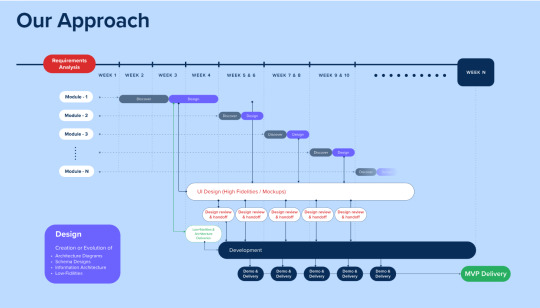
Transform your business with cutting-edge AWS lambda development offered by Antstack. With our deep expertise in software engineering, we design and develop custom applications that streamline operations, enhance productivity, and drive customer engagement. Unlock your business’s full potential with our reliable and agile application development solutions.
0 notes
Text
#aws#azure#gcp#cloudsecurity#cloudcomputing#security#devops#DevSecOps#developer#serverless#lambda#awscloud#engineer#cloud#amazonwebservices#amazonweb#googlecloud#microsoft#bigdata#technology#automation#devopsengineer#diagrams#PaaS#SaaS#FaaS#cloudtechnology#cloudsolutions#hybridcloud#multicloud
0 notes
Text
youtube
Watch the 2024 American Climate Leadership Awards for High School Students now: https://youtu.be/5C-bb9PoRLc
The recording is now available on ecoAmerica's YouTube channel for viewers to be inspired by student climate leaders! Join Aishah-Nyeta Brown & Jerome Foster II and be inspired by student climate leaders as we recognize the High School Student finalists. Watch now to find out which student received the $25,000 grand prize and top recognition!
#ACLA24#ACLA24HighSchoolStudents#youtube#youtube video#climate leaders#climate solutions#climate action#climate and environment#climate#climate change#climate and health#climate blog#climate justice#climate news#weather and climate#environmental news#environment#environmental awareness#environment and health#environmental#environmental issues#environmental education#environmental justice#environmental protection#environmental health#high school students#high school#youth#youth of america#school
18K notes
·
View notes
Text
Best Serverless Web App Development Service Solution
Today, every business keeps some money reserved for building a website to stay ahead of the curve. But it is very difficult to estimate the exact cost for your serverless web app development project. For building an exclusive serverless web, you can get in touch with an efficient website development company.
0 notes
Photo
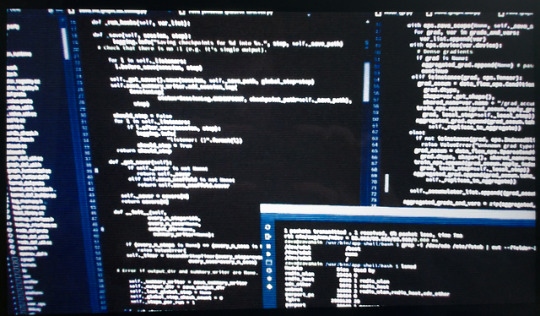
NeXt S1E1 https://www.disneyplus.com/en-gb/video/c9912951-a749-4913-b176-04f1abae655b
https://en.wikipedia.org/wiki/Next_(2020_TV_series)
"The code looks like an Apache variant; but it's the library stack that has me worried"
Source code seems to be Python Tensorflow, but searching for the exact code yielded no real world results, however snippets were found randomly across various example codebases on Github, which may suggest that the code itself was generated by AI.
Eg. "# Check that there is no :1 (e.g. it's single output)." is found here https://gist.github.com/sseveran/e27045c5fdb2d2f836ca63e13755665f but is incredibly out of context in the screenshot.
File names appear somewhat nonsensical too (save_ml_graph_info.config.py) and the files in the left sidebar seem to be a subtree of Tensorflow 1.8's codebase written in C++ (which you would be very unlikely to be looking at whilst developing actual TF code in python...) https://hhhhhojeihsu.github.io/tensorflow_1.8_woboq/tensorflow_1.8_aot_test/tensorflow/tensorflow/core/framework/
Code on the right appears to be taken straight from a Tensorflow tutorial: https://programtalk.com/vs4/python/PacktPublishing/Hands-On-Serverless-Deep-Learning-with-TensorFlow-and-AWS-Lambda/Chapter04/lesson4.3/Lambdapack/tensorflow/python/training/sync_replicas_optimizer.py/
Apparently in the show the AI is writing itself. I find it kinda cute that it's following an online tutorial to do so.
32 notes
·
View notes
Text
Tamagotchi Uni Uses AWS, Amazon Web Services

The Tamagotchi Uni is the first Tamagotchi to ever connect to Wi-Fi, which enables it to receive over the area updates, programing changes, and more. How exactly is this all being done by Bandai Japan? Well Bandai has built the Tamagotchi Uni on the Amazon Web Services platform (AWS).
The details of this are actually outlined on a recent article on the Amazon Web Services blog. The blog post provided a detailed view on how Tamagotchi Uni use AWS to achieve secure and reliable connectivity and quickly deliver new content updates without leaving customers waiting.It details that Bandai Co., Ltd., the company responsible for product development and sales, adopted AWS IoT to realize the concept of globally interconnected Tamagotchi, enabling users to interact with each other.
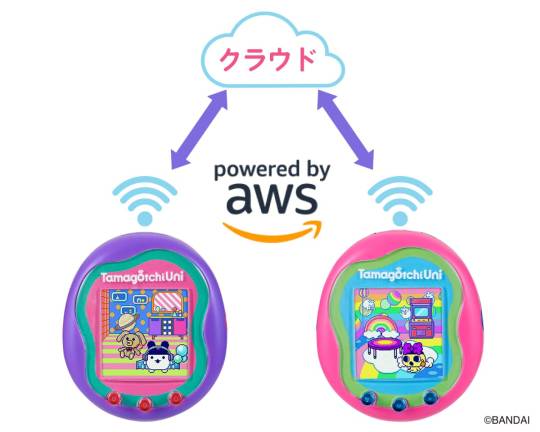
Bandai partnered with their cloud development partner, Phoenisys, Inc., to connect and manage million of Tamagotchi devices. One of the critical features was the over the air software updates which uses the jobs feature of AWS IoT Device Management to distribute the latest firmware across all Tamagotchi devices without causing any delays to customers.
To make Tamagotchi Uni IoT-enabled, Bandai establish the three key goals, which was implementing secure connections, scaling the load-balancing resources to accommodate over 1 million connections worldwide, and optimizing operational costs. The article even features the AWS architecture for the Tamagotchi Uni, which is interesting.
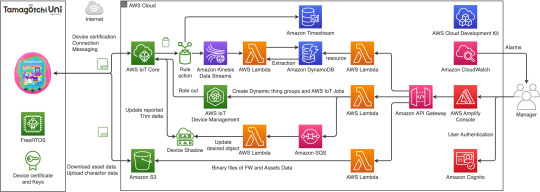
AWS IoT Core is used to manage the state of each Tamagotchi Uni device, which helps retrieve distributed items and content. AWS IoT Device Management is used to index the extensive Tamagotchi Uni fleet and create dynamic groups on the state of each device, facilitating efficient over-the-air (OTA) updates. FreeRTOS is used to minimize the amount of resources and code required to implement device-to-cloud communication for efficient system development. AWS Lambda is used to process tasks, delivering new announcements, and registering assets. Amazon DynamoDB is used as a fully managed, sever less, key-value noSQL database that runs high-performance applications at any scale. Amazon Simple Storage Service (Amazon S3) is used for object storage service, each of these data stores are used to manage the various resources within Tamagotchi Uni. Lastly, Amazon Timestream is used to accumulate historical data of user’s actions like downloading items and additional content.
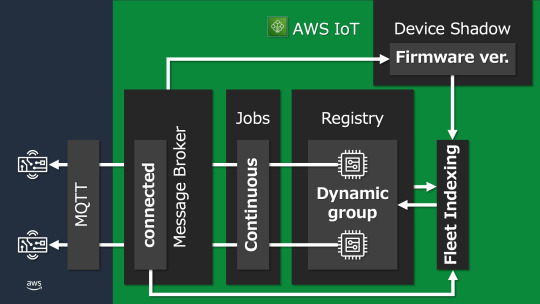
The article also details how Bandai is handling large scale firmware updates to Tamagotchi Uni devices which are executed at a rate of 1,000 units per hour which would have resulted in a delay for some devices. The team actually designed job delivery as a continuous job which automatically updates the devices under certain conditions. This is using fleet indexing that runs a query to see which devices meet the criteria for the update to be pushed out to it.
Lastly the article details how Bandai conducted system performance testing at a large-scale to emulate what it would be like after the device was released. They verified the smooth operation and performance of updates through their testing.
Be sure to check out the full article here on the Amazon AWS blog.
#tamapalace#tamagotchi#tmgc#tamagotchiuni#tamagotchi uni#uni#tamatag#virtualpet#bandai#amazonaws#amazon aws#aws#amazonwebservices#amazon web services#blog
14 notes
·
View notes
Text
The Power of Serverless Computing: Practical Examples and Benefits
Discover the power of #ServerlessComputing, from cost efficiency to real-time analytics, with practical examples in this insightful article! Say goodbye to server maintenance and hello to #FaaS innovation. #CloudComputing #TechTrends
Serverless computing has revolutionized the way developers build and deploy applications. It offers a cost-effective and efficient alternative to traditional server-based architectures, providing businesses with the flexibility to focus on code and functionality rather than managing infrastructure. In this article, we will explore the concept of serverless computing, its advantages, and provide…

View On WordPress
#AWS Lambda#Azure Functions#benefits of serverless#chatbot development#Cloud Computing#Cloud Services#Cost Efficiency#event-driven architecture#FaaS#Function as a Service#Google Cloud Functions#infrastructure management#practical examples#real-time analytics#scalability#scheduled tasks#serverless computing#serverless platforms
2 notes
·
View notes
Text
Exploring the Power of Amazon Web Services: Top AWS Services You Need to Know
In the ever-evolving realm of cloud computing, Amazon Web Services (AWS) has established itself as an undeniable force to be reckoned with. AWS's vast and diverse array of services has positioned it as a dominant player, catering to the evolving needs of businesses, startups, and individuals worldwide. Its popularity transcends boundaries, making it the preferred choice for a myriad of use cases, from startups launching their first web applications to established enterprises managing complex networks of services. This blog embarks on an exploratory journey into the boundless world of AWS, delving deep into some of its most sought-after and pivotal services.

As the digital landscape continues to expand, understanding these AWS services and their significance is pivotal, whether you're a seasoned cloud expert or someone taking the first steps in your cloud computing journey. Join us as we delve into the intricate web of AWS's top services and discover how they can shape the future of your cloud computing endeavors. From cloud novices to seasoned professionals, the AWS ecosystem holds the keys to innovation and transformation.
Amazon EC2 (Elastic Compute Cloud): The Foundation of Scalability At the core of AWS's capabilities is Amazon EC2, the Elastic Compute Cloud. EC2 provides resizable compute capacity in the cloud, allowing you to run virtual servers, commonly referred to as instances. These instances serve as the foundation for a multitude of AWS solutions, offering the scalability and flexibility required to meet diverse application and workload demands. Whether you're a startup launching your first web application or an enterprise managing a complex network of services, EC2 ensures that you have the computational resources you need, precisely when you need them.
Amazon S3 (Simple Storage Service): Secure, Scalable, and Cost-Effective Data Storage When it comes to storing and retrieving data, Amazon S3, the Simple Storage Service, stands as an indispensable tool in the AWS arsenal. S3 offers a scalable and highly durable object storage service that is designed for data security and cost-effectiveness. This service is the choice of businesses and individuals for storing a wide range of data, including media files, backups, and data archives. Its flexibility and reliability make it a prime choice for safeguarding your digital assets and ensuring they are readily accessible.
Amazon RDS (Relational Database Service): Streamlined Database Management Database management can be a complex task, but AWS simplifies it with Amazon RDS, the Relational Database Service. RDS automates many common database management tasks, including patching, backups, and scaling. It supports multiple database engines, including popular options like MySQL, PostgreSQL, and SQL Server. This service allows you to focus on your application while AWS handles the underlying database infrastructure. Whether you're building a content management system, an e-commerce platform, or a mobile app, RDS streamlines your database operations.
AWS Lambda: The Era of Serverless Computing Serverless computing has transformed the way applications are built and deployed, and AWS Lambda is at the forefront of this revolution. Lambda is a serverless compute service that enables you to run code without the need for server provisioning or management. It's the perfect solution for building serverless applications, microservices, and automating tasks. The unique pricing model ensures that you pay only for the compute time your code actually uses. This service empowers developers to focus on coding, knowing that AWS will handle the operational complexities behind the scenes.
Amazon DynamoDB: Low Latency, High Scalability NoSQL Database Amazon DynamoDB is a managed NoSQL database service that stands out for its low latency and exceptional scalability. It's a popular choice for applications with variable workloads, such as gaming platforms, IoT solutions, and real-time data processing systems. DynamoDB automatically scales to meet the demands of your applications, ensuring consistent, single-digit millisecond latency at any scale. Whether you're managing user profiles, session data, or real-time analytics, DynamoDB is designed to meet your performance needs.
Amazon VPC (Virtual Private Cloud): Tailored Networking for Security and Control Security and control over your cloud resources are paramount, and Amazon VPC (Virtual Private Cloud) empowers you to create isolated networks within the AWS cloud. This isolation enhances security and control, allowing you to define your network topology, configure routing, and manage access. VPC is the go-to solution for businesses and individuals who require a network environment that mirrors the security and control of traditional on-premises data centers.
Amazon SNS (Simple Notification Service): Seamless Communication Across Channels Effective communication is a cornerstone of modern applications, and Amazon SNS (Simple Notification Service) is designed to facilitate seamless communication across various channels. This fully managed messaging service enables you to send notifications to a distributed set of recipients, whether through email, SMS, or mobile devices. SNS is an essential component of applications that require real-time updates and notifications to keep users informed and engaged.
Amazon SQS (Simple Queue Service): Decoupling for Scalable Applications Decoupling components of a cloud application is crucial for scalability, and Amazon SQS (Simple Queue Service) is a fully managed message queuing service designed for this purpose. It ensures reliable and scalable communication between different parts of your application, helping you create systems that can handle varying workloads efficiently. SQS is a valuable tool for building robust, distributed applications that can adapt to changes in demand.
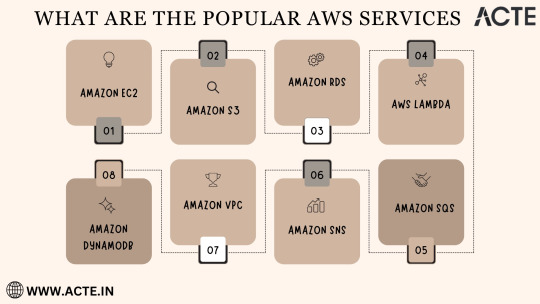
In the rapidly evolving landscape of cloud computing, Amazon Web Services (AWS) stands as a colossus, offering a diverse array of services that address the ever-evolving needs of businesses, startups, and individuals alike. AWS's popularity transcends industry boundaries, making it the go-to choice for a wide range of use cases, from startups launching their inaugural web applications to established enterprises managing intricate networks of services.
To unlock the full potential of these AWS services, gaining comprehensive knowledge and hands-on experience is key. ACTE Technologies, a renowned training provider, offers specialized AWS training programs designed to provide practical skills and in-depth understanding. These programs equip you with the tools needed to navigate and excel in the dynamic world of cloud computing.
With AWS services at your disposal, the possibilities are endless, and innovation knows no bounds. Join the ever-growing community of cloud professionals and enthusiasts, and empower yourself to shape the future of the digital landscape. ACTE Technologies is your trusted guide on this journey, providing the knowledge and support needed to thrive in the world of AWS and cloud computing.
8 notes
·
View notes
Text
Future Trends in Ruby on Rails Web Development

In the ever-evolving landscape of web development, Ruby on Rails (RoR) continues to be a popular and powerful framework for building robust, scalable, and efficient web applications. As technology advances and market demands evolve, the future of Ruby on Rails web development holds exciting possibilities and trends that promise to shape the way developers approach projects. In this article, we delve into the emerging trends and innovations in ruby on rails development company, highlighting the role of leading ruby on rails development companies, particularly those in the USA, in driving innovation and pushing the boundaries of what is possible in web development.
Embracing Modern JavaScript Frameworks:
As JavaScript frameworks like React, Vue.js, and AngularJS gain prominence in the web development landscape, Ruby on Rails developers are increasingly integrating these technologies into their projects. By leveraging the strengths of both Ruby on Rails and modern JavaScript frameworks, developers can create dynamic and interactive user interfaces that enhance the overall user experience. Ruby on Rails development companies in the USA are at the forefront of this trend, leveraging their expertise to seamlessly integrate JavaScript frameworks into RoR applications and deliver cutting-edge solutions to clients.
Microservices Architecture and Scalability:
With the growing complexity of web applications and the need for scalability and flexibility, the adoption of microservices architecture is becoming increasingly prevalent in Ruby on Rails web development. By breaking down monolithic applications into smaller, independent services, developers can achieve greater scalability, fault isolation, and agility. Leading ruby on rails web development companies in the USA are embracing microservices architecture to build scalable and resilient applications that can easily adapt to changing business requirements and user demands.
Progressive Web Applications (PWAs):
Progressive Web Applications (PWAs) represent a significant trend in web development, offering the benefits of both web and mobile applications. By leveraging modern web technologies, including service workers, web app manifests, and responsive design principles, developers can create PWAs that deliver a fast, reliable, and engaging user experience across devices and platforms. Ruby on Rails development companies in the USA are leveraging the flexibility and power of RoR to build PWAs that combine the best features of native mobile apps with the reach and accessibility of the web.
AI-Powered Applications and Chatbots:
Artificial intelligence (AI) and machine learning (ML) technologies are increasingly being integrated into web applications to enhance functionality and user experience. In Ruby on Rails web development, AI-powered applications and chatbots are becoming more prevalent, providing personalized recommendations, automated customer support, and intelligent decision-making capabilities. ruby on rails development company usa are leveraging AI and ML technologies to build sophisticated and intelligent web applications that anticipate user needs and deliver tailored experiences.
Serverless Architecture and Function as a Service (FaaS):
Serverless architecture is revolutionizing the way web applications are built and deployed, offering greater scalability, cost-efficiency, and flexibility. With the rise of Function as a Service (FaaS) platforms like AWS Lambda and Google Cloud Functions, developers can focus on writing code without worrying about managing servers or infrastructure. Leading ruby on rails development companies in the USA are embracing serverless architecture to build lightweight, event-driven applications that can scale seamlessly in response to fluctuating workloads and user demand.
Augmented Reality (AR) and Virtual Reality (VR) Experiences:
The integration of augmented reality (AR) and virtual reality (VR) technologies into web applications is opening up new possibilities for immersive and interactive user experiences. In Ruby on Rails web development, developers are exploring ways to incorporate AR and VR features into e-commerce platforms, educational portals, and entertainment websites. Ruby on Rails web development companies in the USA are at the forefront of this trend, leveraging RoR's flexibility and versatility to build immersive AR and VR experiences that push the boundaries of traditional web development.
Conclusion:
As technology continues to evolve and market demands shift, the future of Ruby on Rails web development holds immense potential for innovation and growth. By embracing emerging trends such as modern JavaScript frameworks, microservices architecture, progressive web applications, AI-powered applications, serverless architecture, and AR/VR experiences, ruby on rails web development company usa are poised to lead the way in shaping the next generation of web applications. With their expertise, creativity, and commitment to excellence, these companies are driving innovation and pushing the boundaries of what is possible in Ruby on Rails web development.
#ruby on rails development company#ruby on rails development company usa#ruby on rails web development company usa
2 notes
·
View notes
Text
Elevating Your Full-Stack Developer Expertise: Exploring Emerging Skills and Technologies
Introduction: In the dynamic landscape of web development, staying at the forefront requires continuous learning and adaptation. Full-stack developers play a pivotal role in crafting modern web applications, balancing frontend finesse with backend robustness. This guide delves into the evolving skills and technologies that can propel full-stack developers to new heights of expertise and innovation.

Pioneering Progress: Key Skills for Full-Stack Developers
1. Innovating with Microservices Architecture:
Microservices have redefined application development, offering scalability and flexibility in the face of complexity. Mastery of frameworks like Kubernetes and Docker empowers developers to architect, deploy, and manage microservices efficiently. By breaking down monolithic applications into modular components, developers can iterate rapidly and respond to changing requirements with agility.
2. Embracing Serverless Computing:
The advent of serverless architecture has revolutionized infrastructure management, freeing developers from the burdens of server maintenance. Platforms such as AWS Lambda and Azure Functions enable developers to focus solely on code development, driving efficiency and cost-effectiveness. Embrace serverless computing to build scalable, event-driven applications that adapt seamlessly to fluctuating workloads.
3. Crafting Progressive Web Experiences (PWEs):
Progressive Web Apps (PWAs) herald a new era of web development, delivering native app-like experiences within the browser. Harness the power of technologies like Service Workers and Web App Manifests to create PWAs that are fast, reliable, and engaging. With features like offline functionality and push notifications, PWAs blur the lines between web and mobile, captivating users and enhancing engagement.
4. Harnessing GraphQL for Flexible Data Management:
GraphQL has emerged as a versatile alternative to RESTful APIs, offering a unified interface for data fetching and manipulation. Dive into GraphQL's intuitive query language and schema-driven approach to simplify data interactions and optimize performance. With GraphQL, developers can fetch precisely the data they need, minimizing overhead and maximizing efficiency.
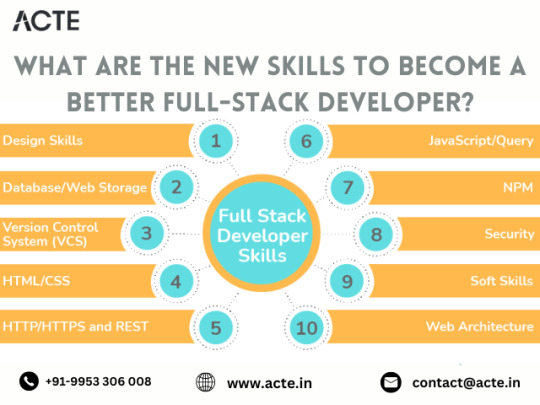
5. Unlocking Potential with Jamstack Development:
Jamstack architecture empowers developers to build fast, secure, and scalable web applications using modern tools and practices. Explore frameworks like Gatsby and Next.js to leverage pre-rendering, serverless functions, and CDN caching. By decoupling frontend presentation from backend logic, Jamstack enables developers to deliver blazing-fast experiences that delight users and drive engagement.
6. Integrating Headless CMS for Content Flexibility:
Headless CMS platforms offer developers unprecedented control over content management, enabling seamless integration with frontend frameworks. Explore platforms like Contentful and Strapi to decouple content creation from presentation, facilitating dynamic and personalized experiences across channels. With headless CMS, developers can iterate quickly and deliver content-driven applications with ease.
7. Optimizing Single Page Applications (SPAs) for Performance:
Single Page Applications (SPAs) provide immersive user experiences but require careful optimization to ensure performance and responsiveness. Implement techniques like lazy loading and server-side rendering to minimize load times and enhance interactivity. By optimizing resource delivery and prioritizing critical content, developers can create SPAs that deliver a seamless and engaging user experience.
8. Infusing Intelligence with Machine Learning and AI:
Machine learning and artificial intelligence open new frontiers for full-stack developers, enabling intelligent features and personalized experiences. Dive into frameworks like TensorFlow.js and PyTorch.js to build recommendation systems, predictive analytics, and natural language processing capabilities. By harnessing the power of machine learning, developers can create smarter, more adaptive applications that anticipate user needs and preferences.
9. Safeguarding Applications with Cybersecurity Best Practices:
As cyber threats continue to evolve, cybersecurity remains a critical concern for developers and organizations alike. Stay informed about common vulnerabilities and adhere to best practices for securing applications and user data. By implementing robust security measures and proactive monitoring, developers can protect against potential threats and safeguard the integrity of their applications.
10. Streamlining Development with CI/CD Pipelines:
Continuous Integration and Deployment (CI/CD) pipelines are essential for accelerating development workflows and ensuring code quality and reliability. Explore tools like Jenkins, CircleCI, and GitLab CI/CD to automate testing, integration, and deployment processes. By embracing CI/CD best practices, developers can deliver updates and features with confidence, driving innovation and agility in their development cycles.
#full stack developer#education#information#full stack web development#front end development#web development#frameworks#technology#backend#full stack developer course
2 notes
·
View notes
Text
Elevating Your Career Trajectory: A Roadmap to Success with AWS
In the fast-evolving landscape of technology, incorporating Amazon Web Services (AWS) into your career strategy can be a game-changer. AWS, a leading cloud computing platform, offers a plethora of opportunities for professionals across various domains. Let's explore a comprehensive roadmap to leverage AWS for unparalleled career success.

1. AWS Certifications: Building the Foundation
Embarking on an AWS-centric career journey begins with acquiring industry-recognized certifications. Certifications such as AWS Certified Solutions Architect, AWS Certified Developer, and AWS Certified SysOps Administrator serve as badges of expertise, validating your skills and enhancing your appeal to potential employers. Dedicate time to comprehensive training programs that prepare you for these certifications, laying a robust foundation for your AWS journey.
2. Practical Experience: Bridging Theory and Application
While certifications validate your theoretical knowledge, practical experience is the bridge that connects theory to real-world application. Dive into AWS projects, experimenting with core services like EC2, S3, Lambda, and more. This hands-on experience not only reinforces your understanding but also showcases your ability to navigate and implement AWS solutions in diverse scenarios. Practical expertise is a key differentiator in the competitive job market.
3. Specialization in Domains: Carving Your Niche in the AWS Ecosystem
AWS offers a vast ecosystem with diverse domains, including cloud architecture, machine learning, cybersecurity, and more. Tailor your AWS journey by specializing in a domain aligned with your career goals. Becoming an expert in a specific niche within the AWS landscape positions you as a sought-after professional in that field, opening doors to specialized roles and unique opportunities.
4. Networking and Community Engagement: Building Connections
The power of networking cannot be overstated. Join AWS communities, participate in forums, and attend industry events to connect with professionals in the AWS ecosystem. Building a network within the industry not only provides valuable insights but also offers job leads, potential collaborations, and mentorship opportunities. Networking is a dynamic force that propels your AWS career forward.

5. Continuous Learning: Staying Ahead in the Dynamic Cloud Landscape
The cloud industry is dynamic, with AWS continually introducing new features, services, and best practices. Continuous learning is not just a recommendation but a necessity. Stay updated with the latest AWS releases and advancements. This commitment to staying at the forefront of technology positions you as a valuable asset to organizations looking to innovate with AWS solutions.
6. Showcasing Achievements: Creating Your Professional Narrative
Your AWS journey is a story of achievements and contributions. Showcase your expertise by creating a digital portfolio or blog that highlights your AWS projects and experiences. A well-documented portfolio serves as a living testament to your skills and provides tangible examples of the value you bring to potential employers or clients.
In conclusion, integrating AWS into your future career involves a strategic blend of certifications, practical experience, specialization, networking, continuous learning, and showcasing your achievements. As organizations increasingly embrace cloud solutions, your proficiency in AWS becomes a key differentiator, positioning you for success in diverse roles and industries. Embrace the AWS journey, and let it be the catalyst for unprecedented career growth and accomplishment.
2 notes
·
View notes
Link
Are you tired of dealing with server maintenance and scaling issues? Our new blog post on Building Serverless Web Apps Using AWS Lambda and API Gateway has got you covered! Learn how to build scalable, cost-effective web apps with ease.
#aws cloud#serverless#webapps#apigateway#lambda#technology#webApplication#server#buliding#mobiosolutions
7 notes
·
View notes